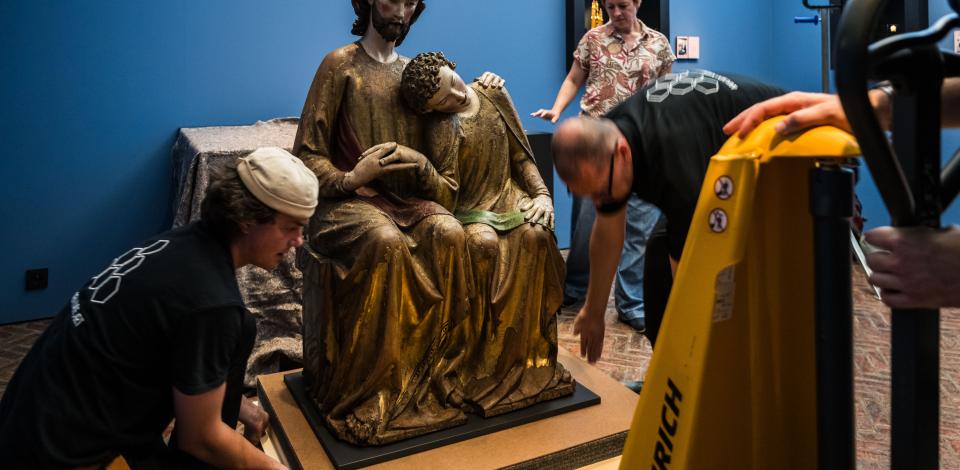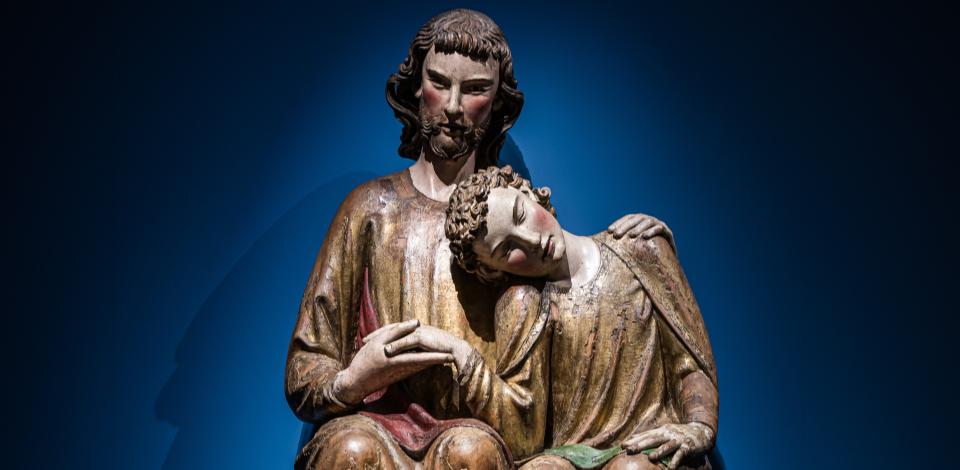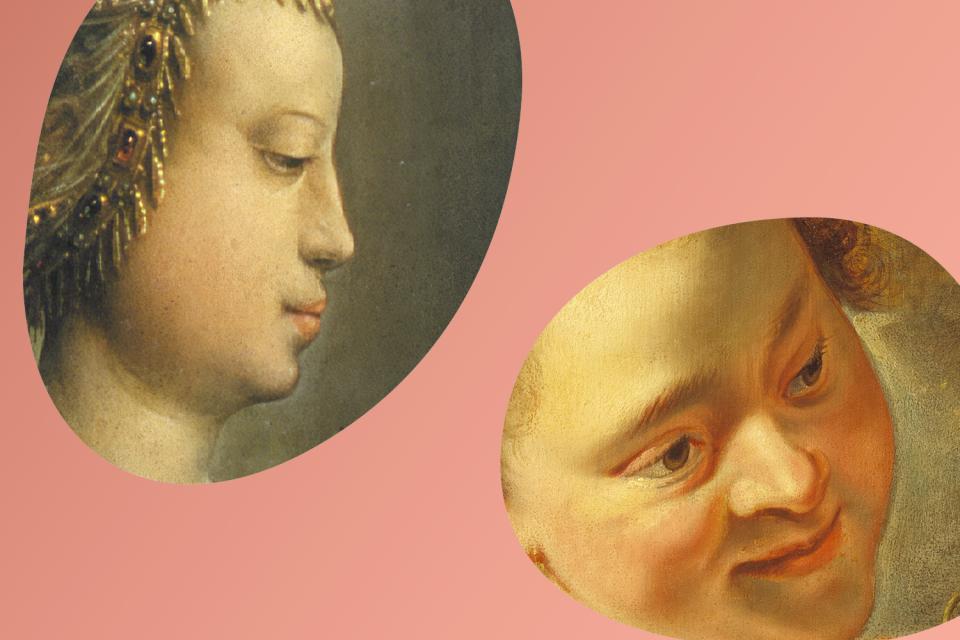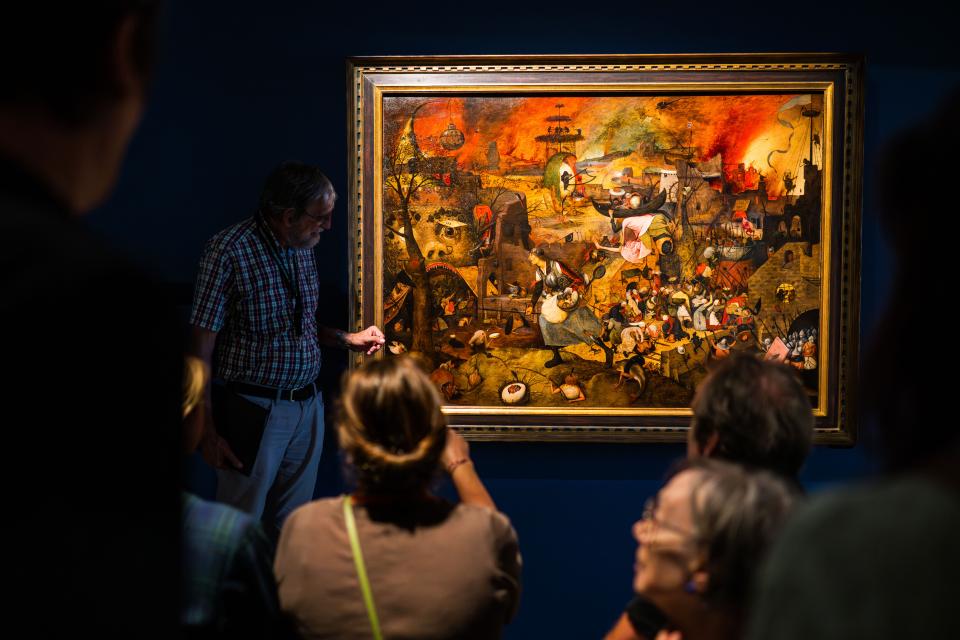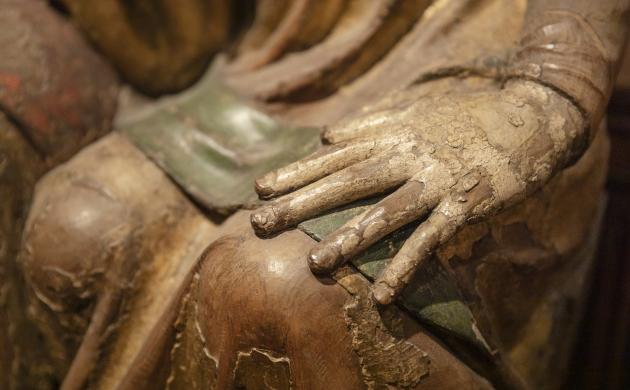In the accompanying video, screenwriter Angelo Tijssens, KIK-IRPA conservator Ingrid Geelen, and museum director Carl Depauw explain the emotional power of the sculpture, its history, the restoration process, and its return to the Museum Mayer van den Bergh for the exhibition Beloved. An intimate look at masterpieces. (Read on below the video.)
Carved from a single block of walnut
Restoration of this Flemish masterpiece, which began in 2023, yielded fascinating insights. Radiographic analysis confirmed that the entire sculpture was carved from a single block of walnut — a remarkable feat of craftsmanship, especially given the size of the piece. Notably, the sculpture has a hollowed-out back. Traces of old nails reveal it was originally covered with a wooden panel, a common feature in Gothic sculpture. The wood’s surface bears the tell-tale marks of gouges, rasps, and adzes, allowing us to almost feel the sculptor’s toil in the surface of the wood.
Worn knees and fresh cheeks
The polychromy (paintwork) is classic Gothic: gold leaf, red, green, and blue. Gold was especially common on religious figures, creating a radiant effect as it reflected light, and enhanced the devotional experience. Over the centuries, much of this colour had worn away. The knees of Jesus and St John were completely bare, likely worn down by centuries of touch from Dominican nuns in the Swiss convent of Diessenhofen, home to the sculpture for many centuries. Yet the rosy blush of their cheeks remained perfectly preserved, showing no signs of wear.
In pictures: the treatment at the Royal Institute for Cultural Heritage (KIK-IRPA)
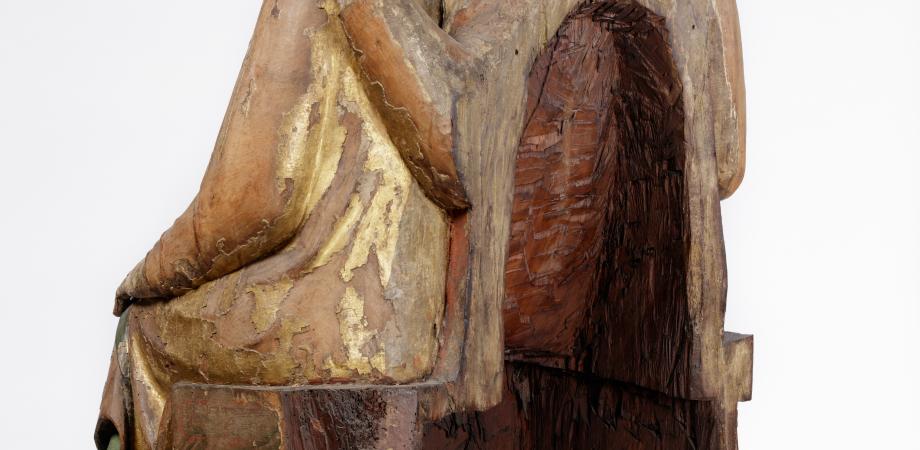 © KIK-IRPA (photographer Stéphane Bazzo)
© KIK-IRPA (photographer Stéphane Bazzo)
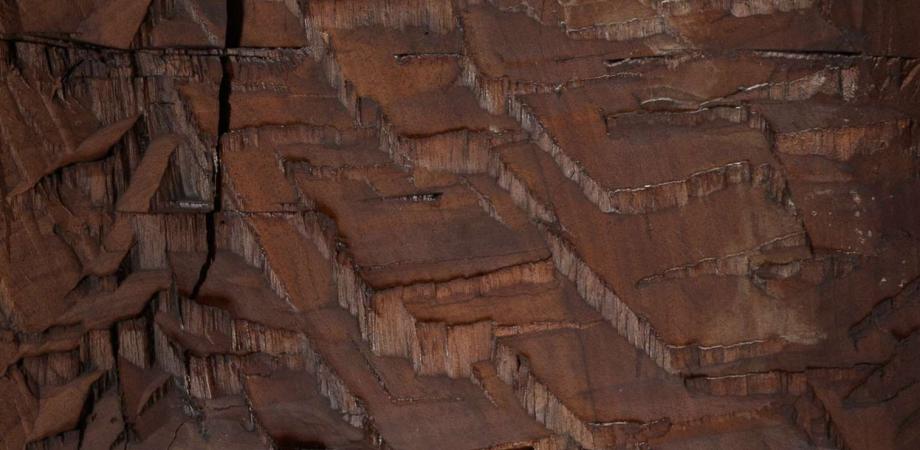 Traces of chisels © KIK-IRPA (photographer Stéphane Bazzo)
Traces of chisels © KIK-IRPA (photographer Stéphane Bazzo)
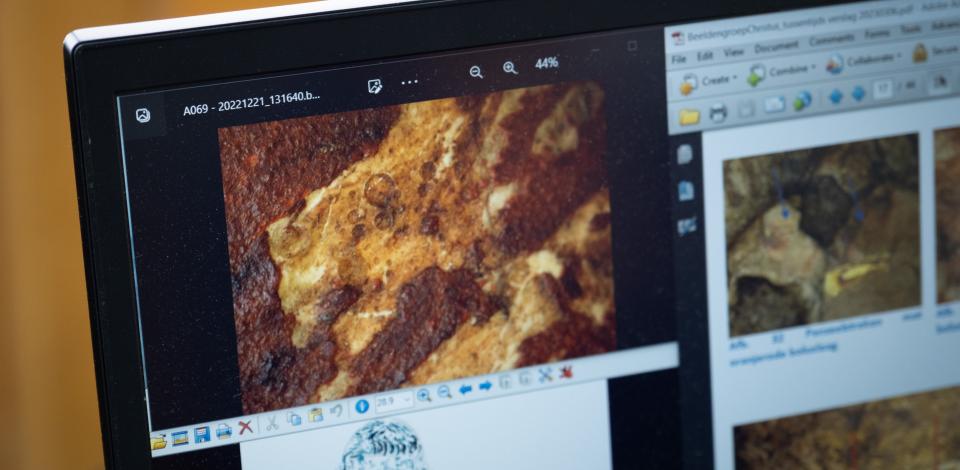 © KIK
© KIK
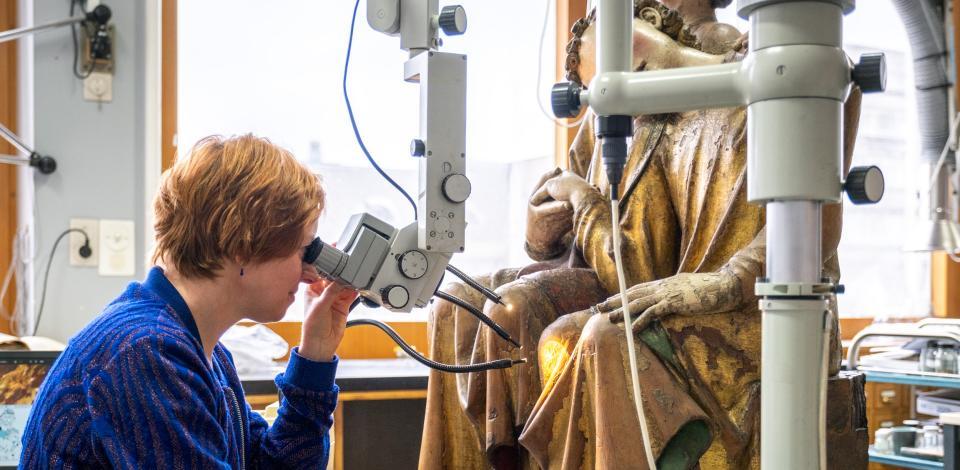 KIK-restaurator Ingrid Geelen en de Christus-Johannesgroep. © KIK
KIK-restaurator Ingrid Geelen en de Christus-Johannesgroep. © KIK
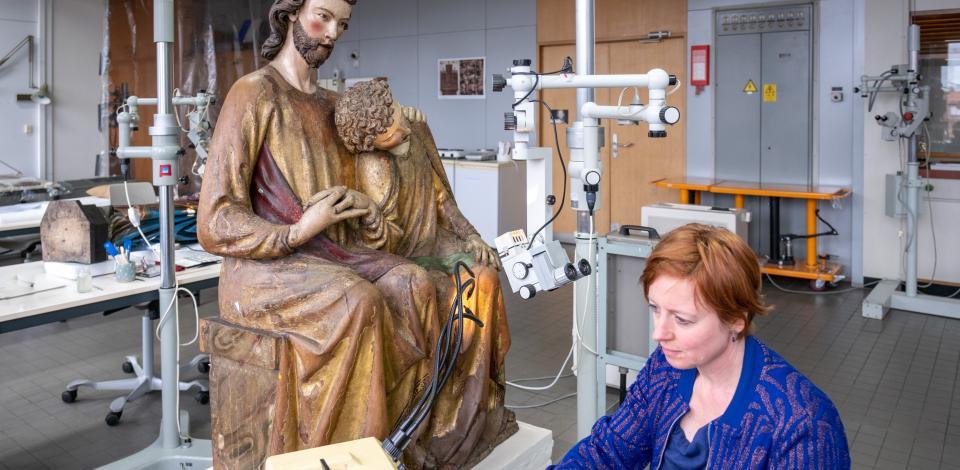 © KIK
© KIK
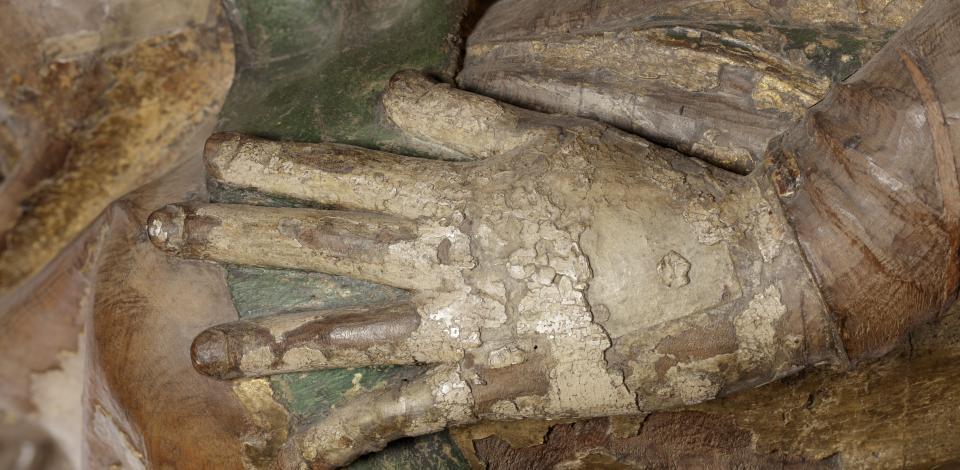 Parchment preparation © KIK-IRPA (photographer Stéphane Bazzo)
Parchment preparation © KIK-IRPA (photographer Stéphane Bazzo)
Colours restored
During the restoration, not only were the colours brightened, but they were also stabilised using samples from KIK-IRPA archives. These pigments date back to a previous treatment in 1951, when the sculpture was saturated with a wax-resin mixture, which left the surface dull and greasy. A brown, semi-transparent layer was also applied to mask missing sections, but it mostly resulted in unsightly stains and visual distortion. Restorers have now meticulously addressed woodworm holes, cracks, bulges, discolouration, and other signs of age. The result of nearly two years’ work? A magnificent image of Christ and St John, freed from grime and greyness, which after 850 years still radiates solace and connection.
Empathy and comfort
With St John’s delicate, almost feminine features, the nuns of the convent found it easy to identify with the figure for generations. The intertwined right hands symbolise a spiritual ‘marriage’ — the mystical bond between Christ and the believer, often described as the ‘Bride of Christ’. Even today, the sculpture continues to evoke strong feelings of empathy, comfort, and connection in visitors. Angelo Tijssens chose it as his personal favourite precisely because its intimacy transcends its original religious symbolism. In his words: “There’s a connection between these two figures: one head listening to another’s heart, their hands entwined. Empathy, emotion, comfort — that’s what this centuries-old, exquisitely carved work still evokes in anyone who sees it.”
Back home in Antwerp
Come and admire the sculptural group of Christ and St. John the Evangelist at the Maagdenhuis in Antwerp, where it now shines alongside 90 other masterpieces in the exhibition Beloved. An intimate look at masterpieces.
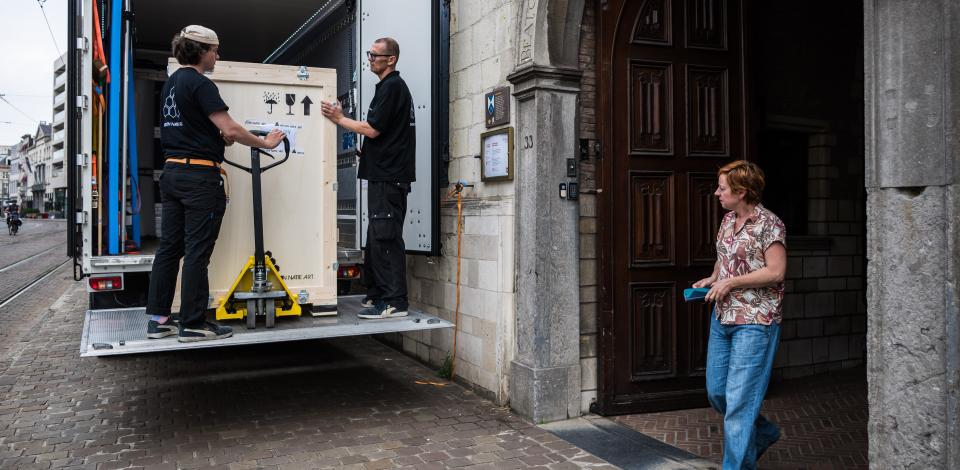
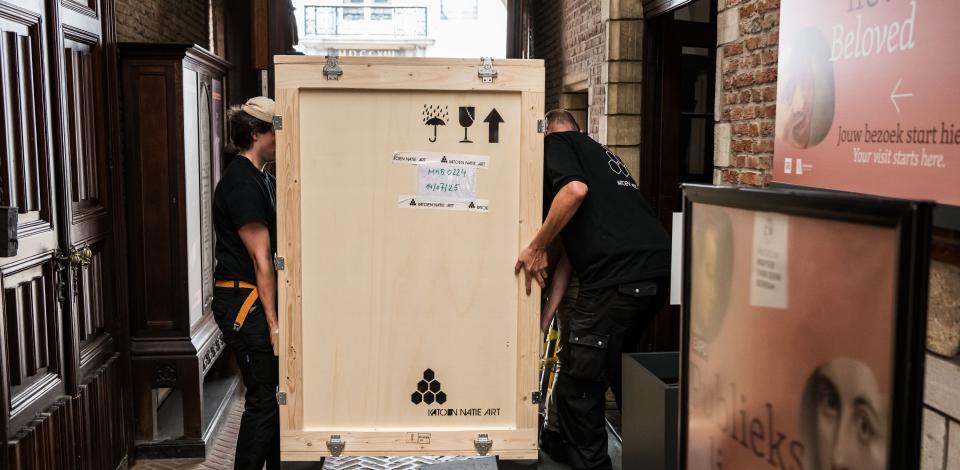
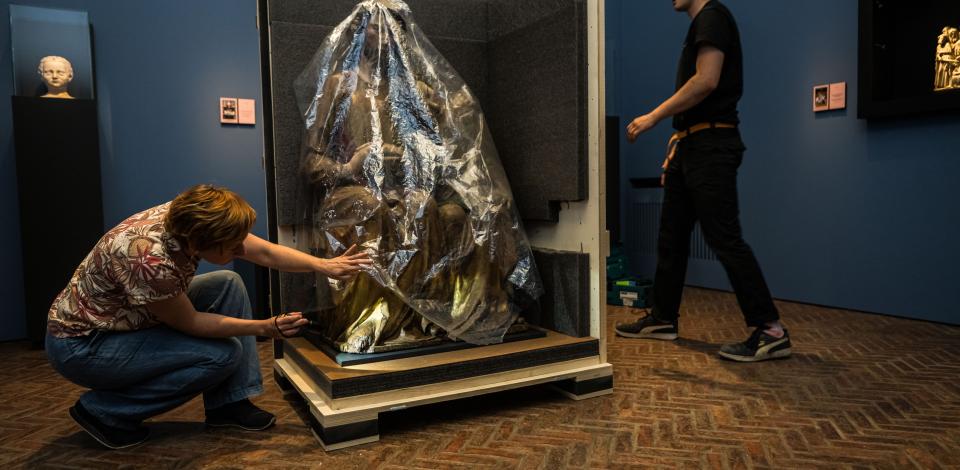
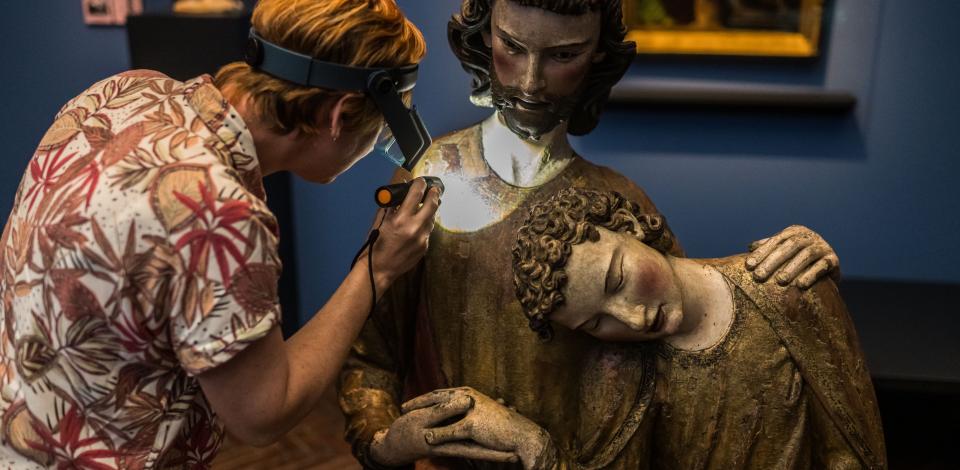 KIK-restaurator Ingrid Geelen en de Christus-Johannesgroep. © Dries Luyten
KIK-restaurator Ingrid Geelen en de Christus-Johannesgroep. © Dries Luyten
